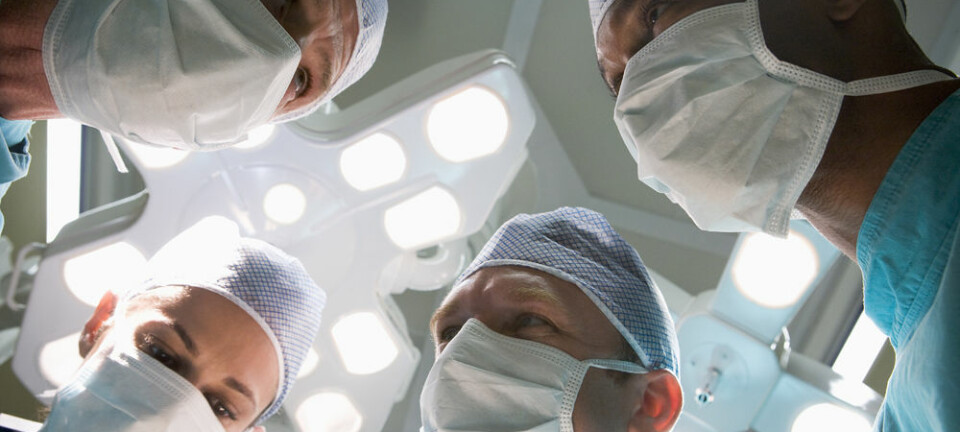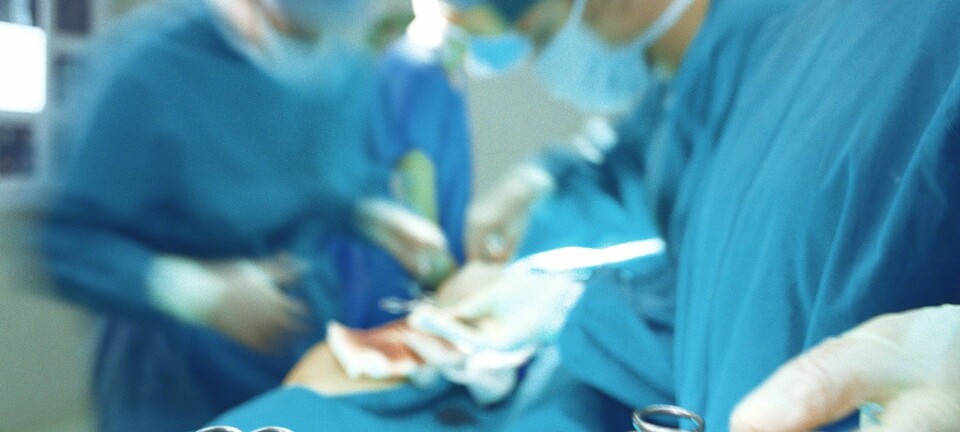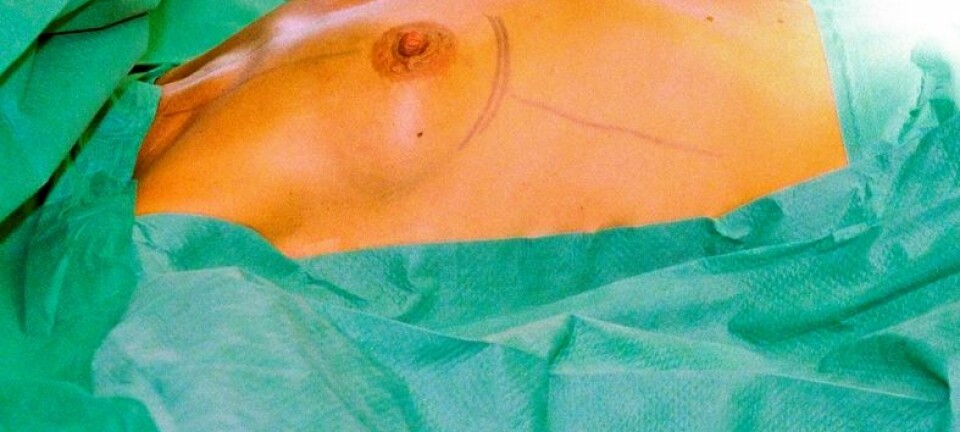“No-touch” breakthrough for heart bypasses
Transplanted blood vessels are stronger when they are moved along with surrounding tissue. This makes coronary bypass surgery last longer.
Bypass operations restore blood flow to the heart muscle when the coronary arteries are clogged. Sections of healthy blood vessels, arteries and veins are transplanted and grafted to other arteries that are connected to a patient’s heart muscle, bypassing constricted arteries.
Surgeons commonly use arteries taken from the chest or an arm, combined with veins removed from the patient’s legs.
But one problem with coronary bypass surgery is that the transplanted blood vessels, particularly the veins, have a limited life. They also become clogged within a few years and after six or seven years this hardening of the transplanted blood vessels starts to speed up. Around half of all bypass patients need to have another operation after ten years.
Rough treatment of veins
The limited lifetime of the transplanted blood vessels may be caused by the relatively rough treatment they endure.
A transplanted vein is stripped of its surrounding tissue, which triggers a strong contraction and collapse. The vein is then blown out again by running high-pressure salt water through it. This is fairly tough treatment for a vein, which is generally less robust than an artery.
“Veins have thin walls and in contrast to arteries are not made to handle high blood pressure. When you strip away the surrounding tissue you also remove some of the mechanical support structure,” explains Mats Dreifaldt, a chief physician at the Örebro University Hospital and researcher at Örebro University.
Veins in a blanket
Dreifaldt and colleagues have developed the no-touch technique, where they avoid handling the vein directly by transplanting it encased in its blanket of its surrounding tissue.
“Our research shows that if veins from the leg are not stripped, meaning that if the surgeon refrains from following normal procedure, which involves removing the fat and vasa vasorum [the network of small blood vessels that supply the larger blood vessel], the vein functions better,” he says.
“When you keep a sheath of tissue around the vein, it doesn’t contract. So it doesn’t need to be expanded. And because the tiny blood vessels around the vein are still in place, the wall of the vein gets oxygen and nourishment. Additionally, the tissue continues to produce nitrogen oxide, which keeps the blood vessel open.”
Better than an artery
In traditional bypass surgery, arteries transplanted from the arm have worked better than veins from the leg. But Dreifaldt points out that this method has its limitations. For example, the arm artery called arteria radialis or radial artery is transplanted as a replacement for clogged coronary arteries, but it too can be vulnerable to clogging by fatty plaque and is sometimes too short to use.
“The radial artery is an excellent candidate for transplanting, but only under very special conditions. With the no-touch vein transplantation we don’t need to consider all these factors, and we still achieve an opening of over 90 percent 8½ years after the operation,” says Dreifaldt.
“After three years, 94 percent of the veins in patients whose surgery was done with our method were still open, as compared to 82 percent of the arteries taken from the arm.”
Infection risk
One disadvantage with the no-touch method, however, is that a vein has to be removed through a long incision in the leg, which increases chances of infections.
“Transplanting a vein with the no-touch method is more technically intricate than conventional vein transplants, and a learning curve is definitely involved,” Dreifaldt says. “Our infection frequency is currently about 20 percent, which is comparable to the infection risk for conventional vein transplants.”
Keyhole surgery
The researchers plan to simplify the method with the use of keyhole surgery, which would enable them to remove veins and their surrounding tissue through a tiny incision.
“We’ve just started to work with this, and it will take two or three years before the technique is ready,” says Dreifaldt.
Translated by: Glenn Ostling










